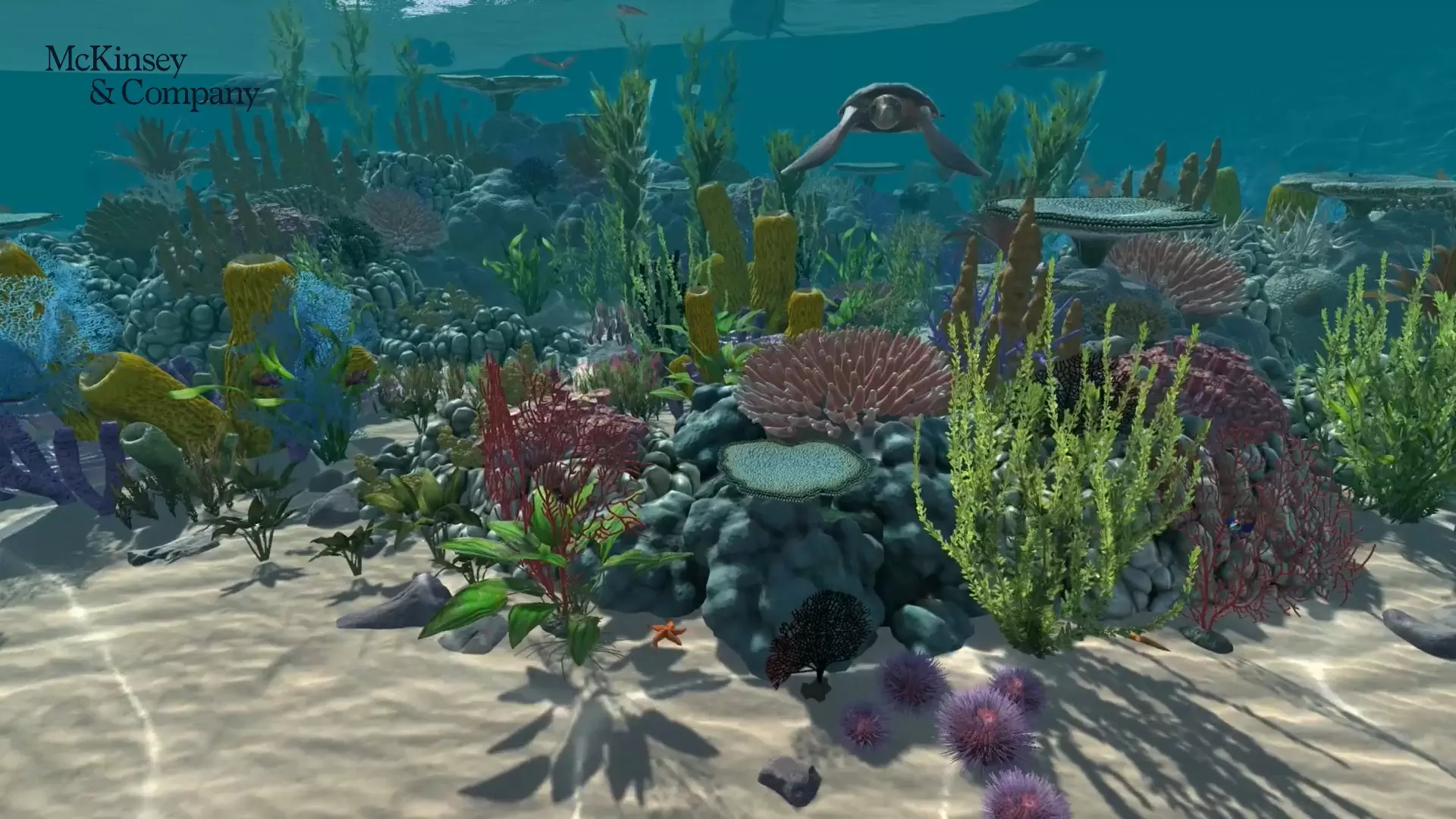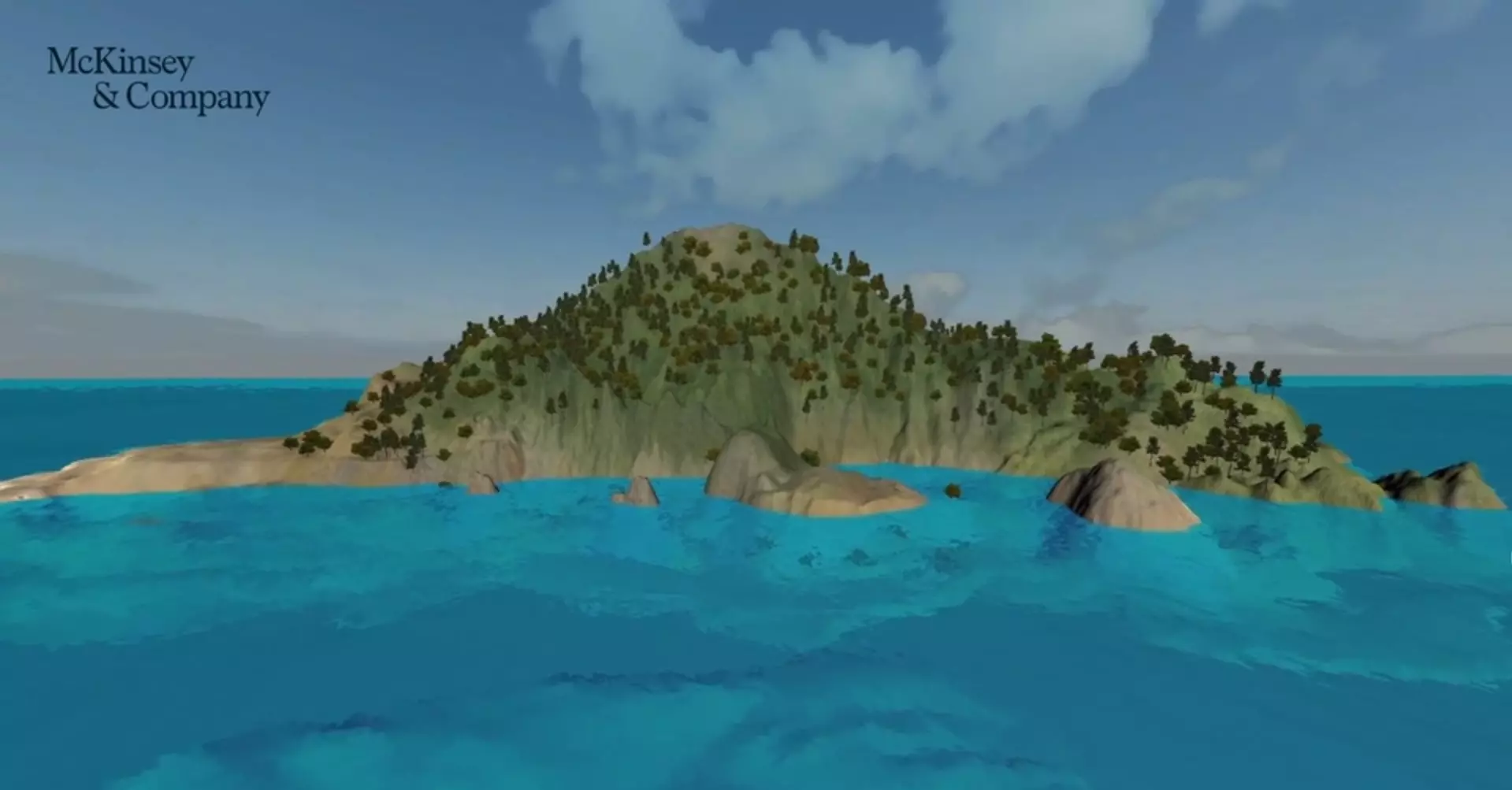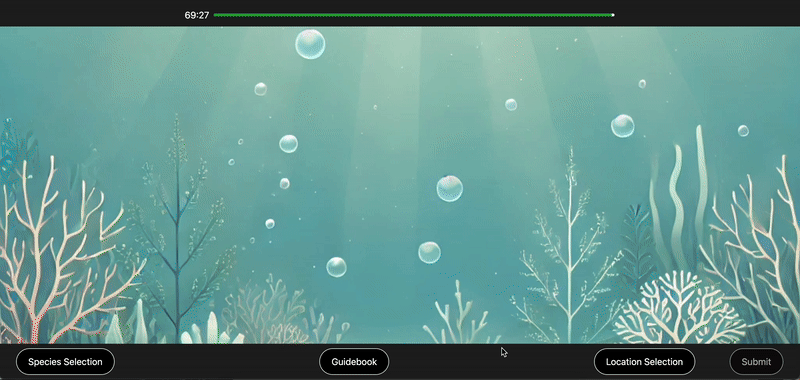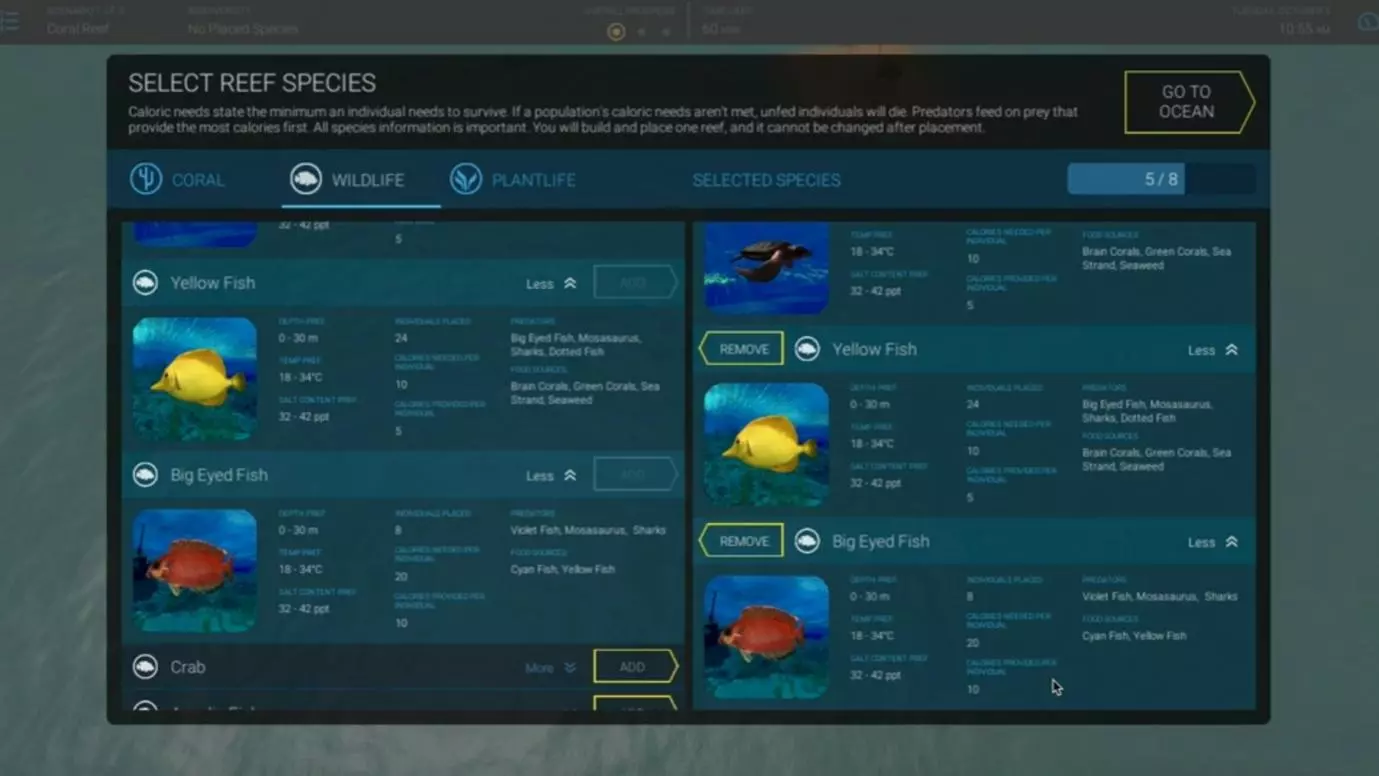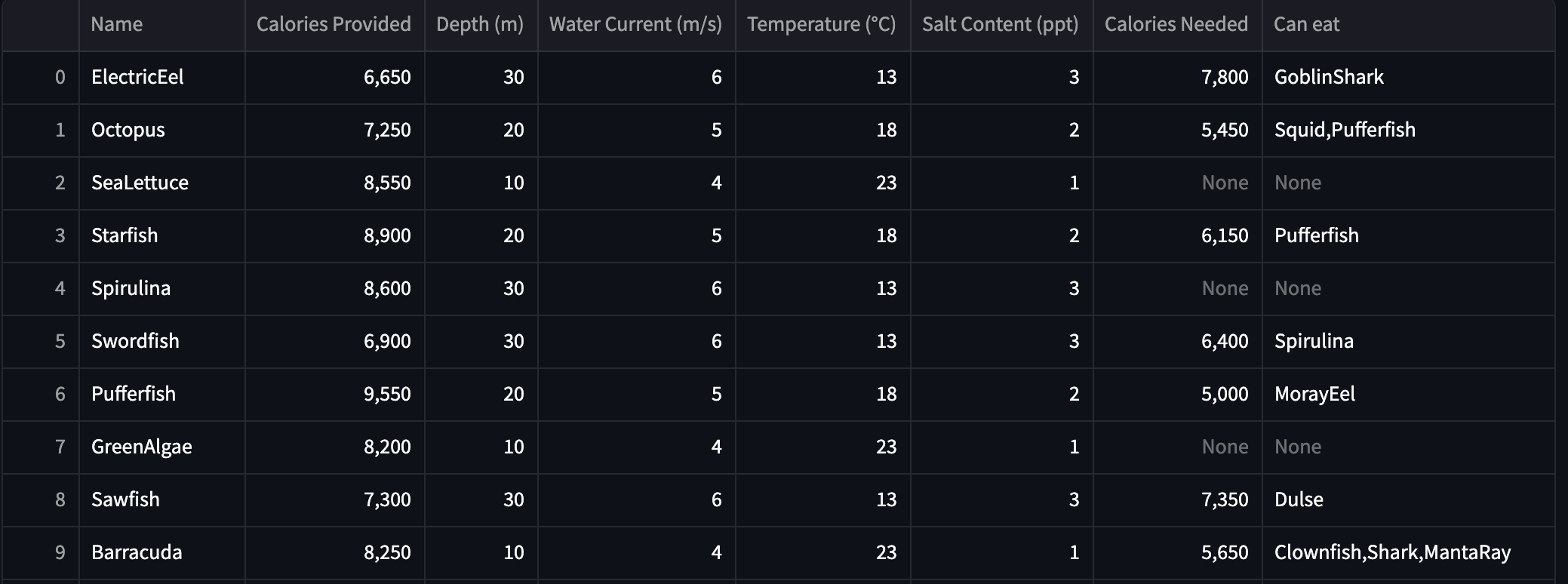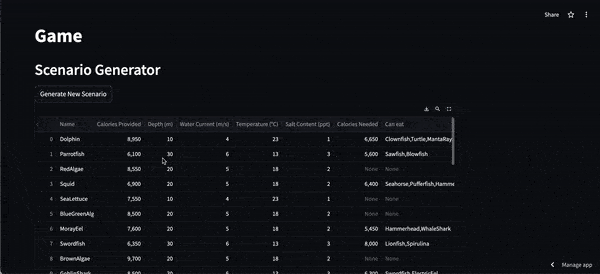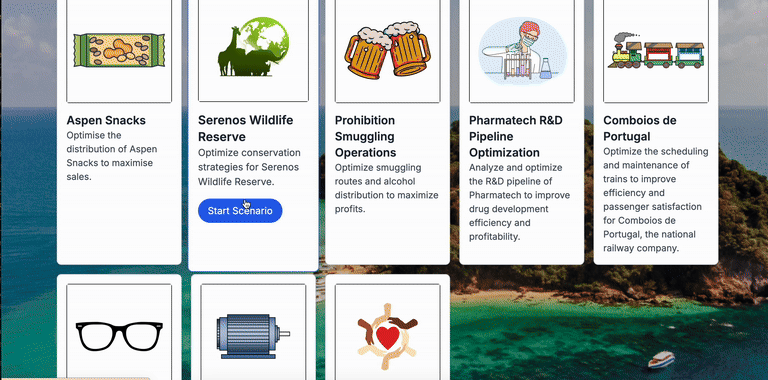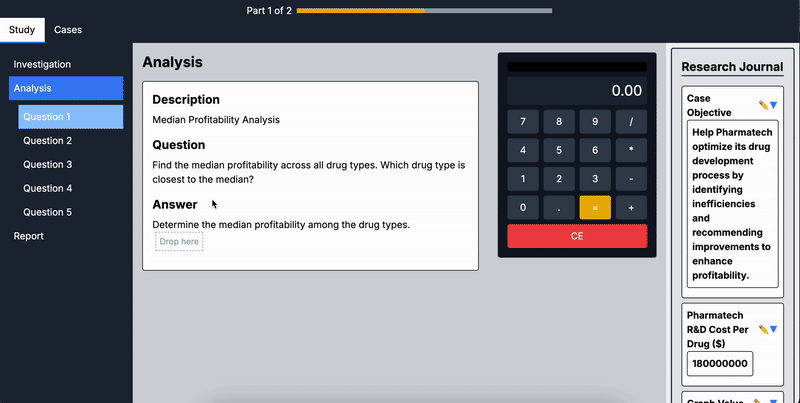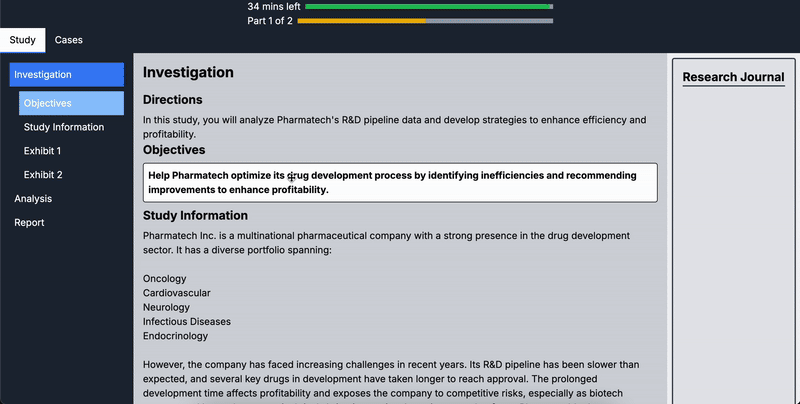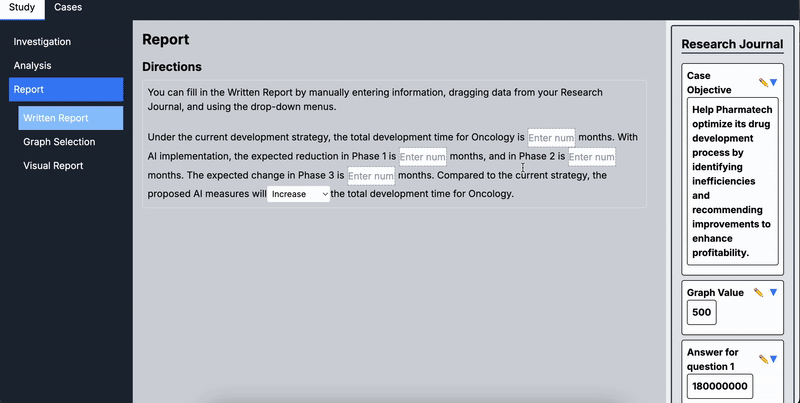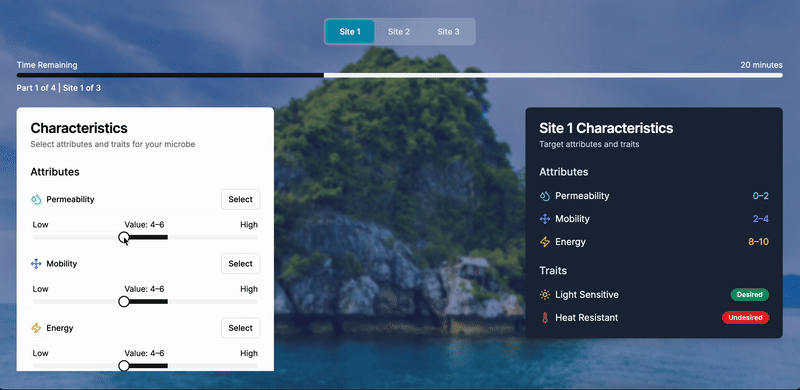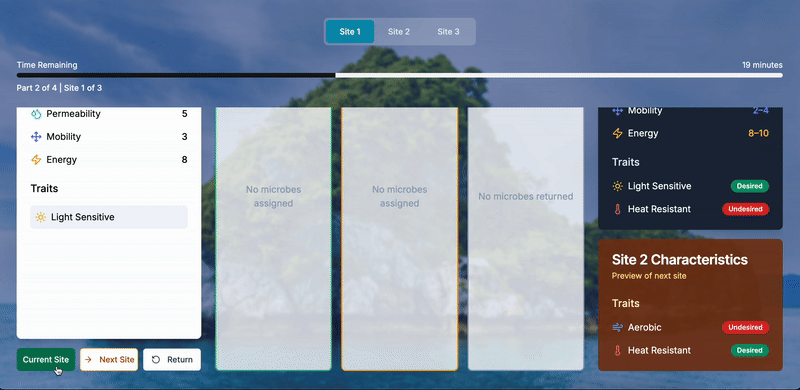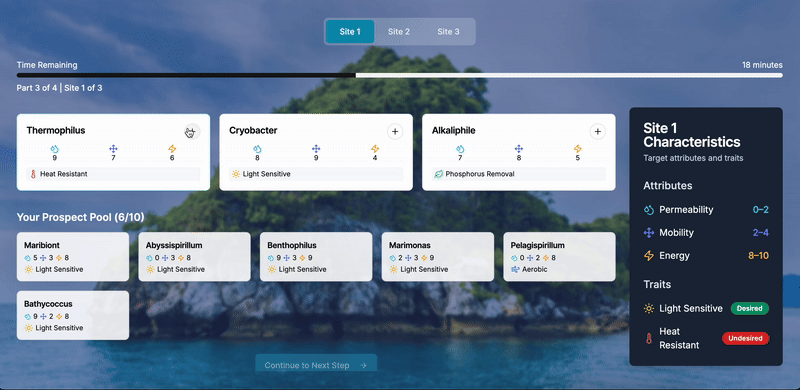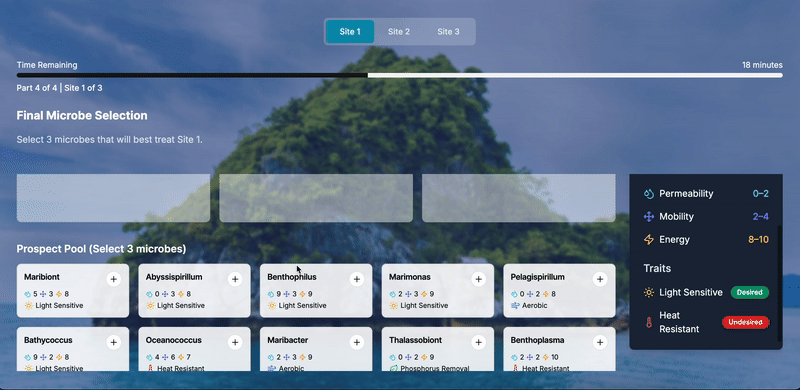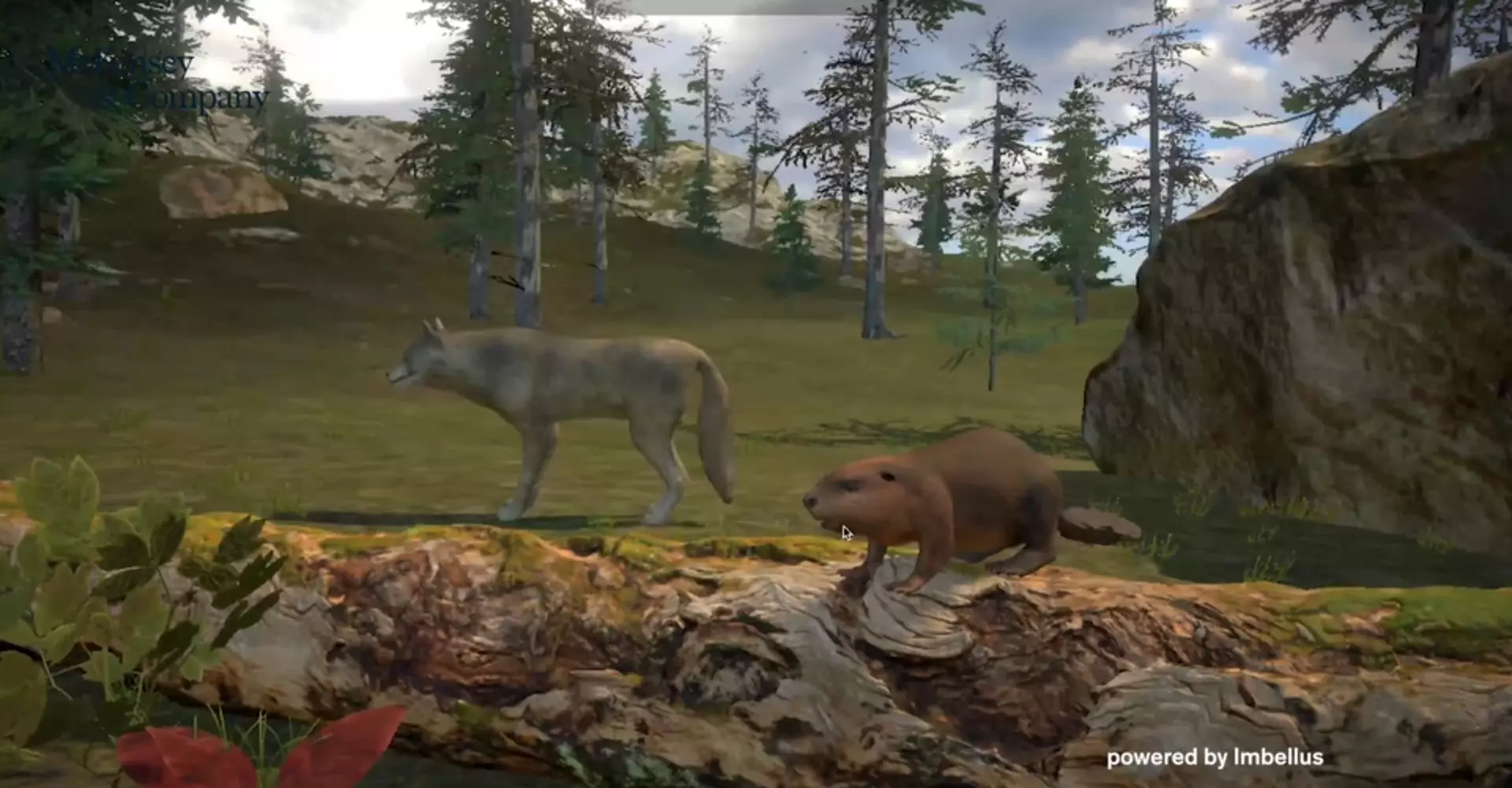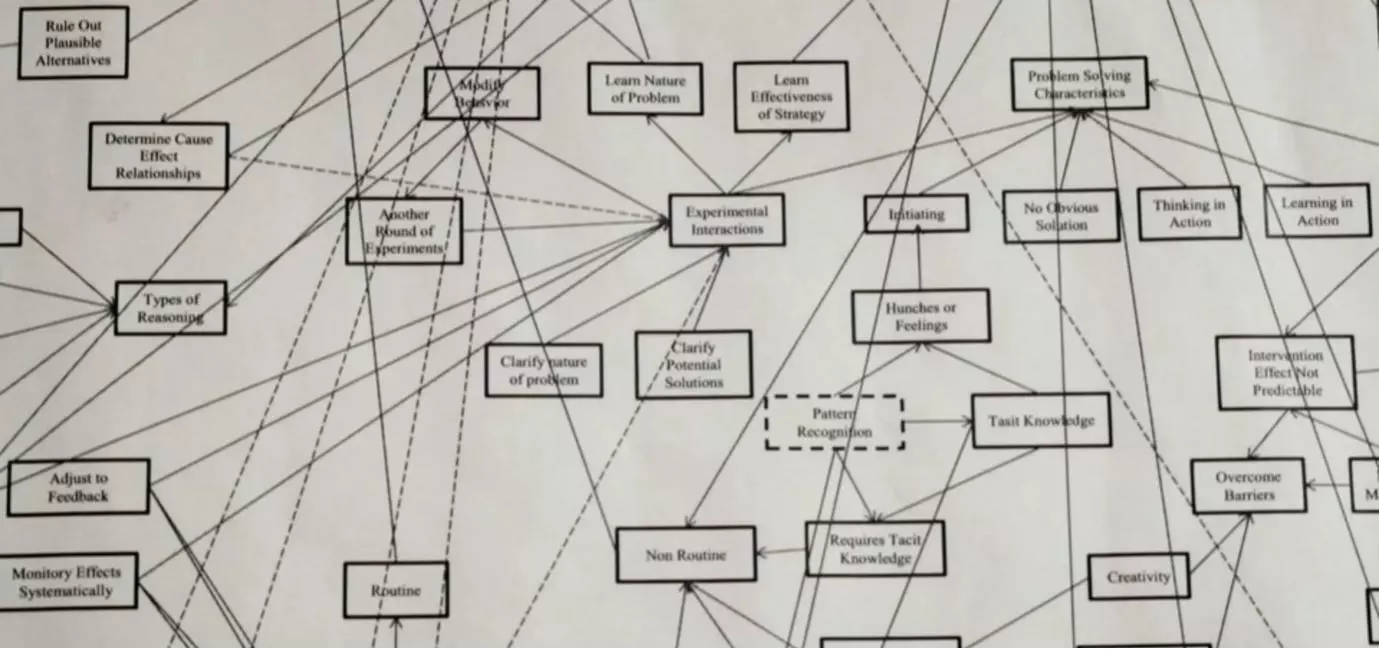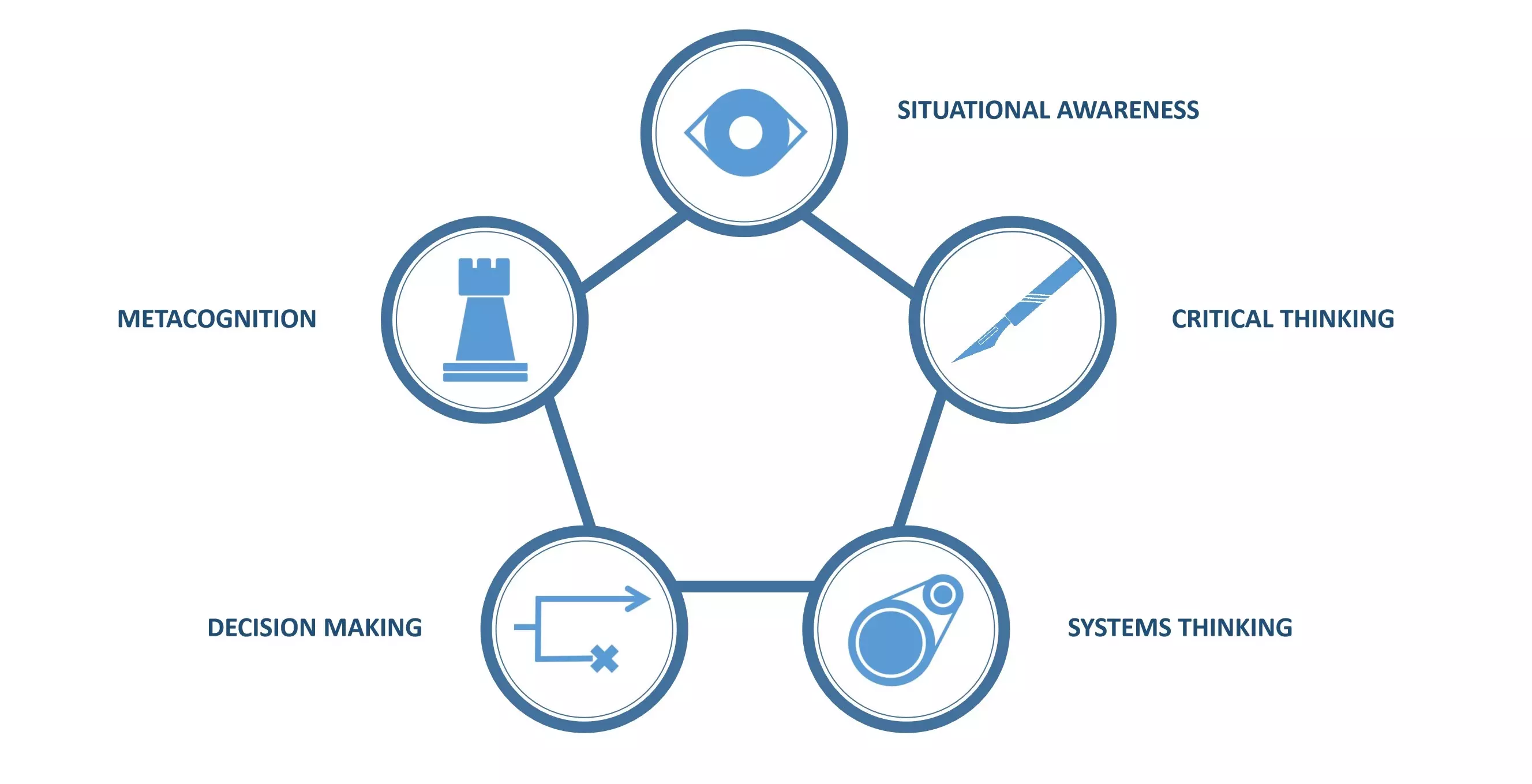MCC is here to help
McKinsey’s Solve assessment has challenged candidates since its 2017 debut in London — and it got tougher in 2023 with the Redrock case and, as of 2025, with the full addition of The Sea Wolf (a.k.a. Ocean Cleanup).
Since its initial roll-out, the Solve assessment has definitely been the most idiosyncratic, but also the most advanced, of the screening tests used by the MBB firms.
When you consider that McKinsey are potentially cutting 70%+ of the applicant pool based on this single test, you can hardly blame applicants for being worried. In fact, the pass rate is estimated to be lower than 30%.
What information is available online can be often contradictory. For a long time, there was huge disagreement as to whether it is actually possible to meaningfully prepare for the Solve assessment. Thanks to our user base, we at MCC keep our material regularly updated to reflect the latest changes to the Solve assessment and have been following up with candidates to see which strategies and approaches actually work to push individuals through to interview.
Here, we’ll explain that it is indeed possible to prepare effectively for all versions of Solve and give you some ideas for how you can get started. Understanding how the Solve assessment works, what it tests you for and how is critical for all but the most hurried preparations.
This article makes for a great introduction to the Solve assessment. However, if you are going to be facing this aptitude test yourself and want full information and advice for preparation, then you should ideally get our preparation package which includes our guide and the actual test simulations:
What is the McKinsey Solve assessment?
In simple terms, the McKinsey Solve assessment is a set of ecology-themed video games. In these games, you must do things like build food chains, protect endangered species, manage predator and prey populations or treat oceanic ecosystems.
Usually, you will be given around 110 minutes to complete three separate games, spending about the same amount of time on each.
Until recently, these games had uniformly been Ecosystem Building and Redrock. However, since late 2024, McKinsey has been rolling out The Sea Wolf game, a new addition to the Solve assessment.
We’ll run through a little more on all these games below to give you an idea of what you’ll be up against for all versions and possible new iterations.
An important aspect that we'll cover in more detail here is that the Solve games don't only score you on your answers (your "product score"), but also on the method you use to arrive at them (your "process score") - considerably impacting optimal strategy.
In the past, candidates had to show up to a McKinsey office and take what was then the Digital Assessment or PSG on a company computer. However, candidates are now able to take the re-branded Solve assessment at home on their own computers.
Test takers are allowed to leverage any assistance they like (you aren’t spied on through your webcam as you would be with some other online tests), and it is common to have a calculator or even another computer there to make use of.
Certainly, we strongly advise every candidate to have at least a pen, paper and calculator on their desk when they take the Solve assessment.
Common Question: Is the Solve assessment the same thing as the PSG?
In short, yes - “Solve” is just the newer name for the McKinsey Problem Solving Game.
We want to clear up any potential confusion right at the beginning. You will hear this same screening test called a few different things in different places. The Solve moniker itself is a relatively recent re-branding by McKinsey. Previously, the same test was known as either the Problem Solving Game (usually abbreviated to PSG) or the Digital Assessment. You will also often see that same test referred to as the Imbellus test or game, after the firm that created the first version.
You will still see all these names used across various sites and forums - and even within some older articles and blog posts here on MyConsultingCoach. McKinsey has also been a little inconsistent on what they call their own assessment internally. Candidates can often become confused when trying to do their research, but you can rest assured that all these names refer to the same screening test - though, of course, folk might be referring to ecosystem building, Redrock or Sea Wolf. This shows how this screening test is still in its experimental phase.
How and why does McKinsey use the Solve assessment?
It’s useful to understand where the Solve assessment fits into McKinsey’s overall selection process and why they have felt the need to include it.
Let’s dive right in…
How is the Solve Assessment used by McKinsey?
McKinsey's own account of how the Solve assessment is used in selection can be seen in the following video:
At present, it seems that only those applying for very senior positions, or perhaps those with particularly strong referrals and/or connections, are allowed to skip the test. Even this will be office-dependent.
As noted above, one of the advantages of the Solve assessment is that it can be given to all of McKinsey’s hires. Thus, you can expect to be run into the same games whether you are applying as a generalist consultant or to a specialist consulting role - with McKinsey Digital, for example.
The takeaway here is that, if you are applying to McKinsey for any kind of consulting role, you should be fully prepared to sit the Solve Assessment!
Where does the Solve assessment fit into the recruitment process?
You can expect to receive an invitation to take the Solve assessment shortly after submitting your resume.
It seems that an initial screen of resumes is made, but that most individuals who apply are invited to take the Solve assessment.
Any initial screen is not used to make a significant cut of the candidate pool, but likely serves mostly to weed out fraudulent applications from fake individuals (such as those wishing to access the Solve assessment more than once so they can practice...) and perhaps to eliminate a few individuals who are clearly far from having the required academic or professional background, or have made a total mess of their resumes.
Your email invitation will generally give you either one or two weeks to complete the test, though our clients have seen some variation here - with one individual being given as little as three days.
Certainly, you should plan to be ready to sit the Solve assessment within one week of submitting your resume!
Once you have completed the test, McKinsey explain on their site that they look at both your test scores and resume (in more detail this time) to determine who will be invited to live case interviews. This will only be around 30% of the candidates who applied - possibly even fewer.
One thing to note here is that you shouldn’t expect a good resume to make up for bad test scores and vice versa. We have spoken to excellent candidates whose academic and professional achievements were not enough to make up for poor Solve performance. Similarly, we don’t know of anyone invited to interview who hadn’t put together an excellent resume.
Blunty, you need great Solve scores and a great resume to be advanced to interview. That's the price to pay to get a seat at the MBB table.
Your first port of call to craft the best possible resume and land your invitation to interview is our free consulting resume guide and our free resume review bot.
Why does this test exist?
As with Bain, BCG and other major management consulting firms, McKinsey receives far far more applications for each position than they can ever hope to interview. Compounding this issue is that case interviews are expensive and inconvenient for firms like McKinsey to conduct. Having a consultant spend a day interviewing just a few candidates means disrupting a whole engagement and potentially having to fly that consultant back to their home office from wherever their current project was located. This problem is even worse for second-round interviews given by partners.
The Problem Solving Test (invariably shortened to PST) had been used by McKinsey for many years. The fact that we are writing about it makes me feel old already. However, it had a number of problems that were becoming more pronounced over time, and it was fundamentally in need of replacement. Some of these were deficiencies with the test itself, though many were more concerned with how the test fitted with the changing nature of the consulting industry.
The Solve assessment was originally developed and iterated by the specialist firm Imbellus (now owned by gaming giant Roblox) to replace the long-standing PST in this screening role and offers solutions to those problems with its predecessor.
We could easily write a whole article on what McKinsey aimed to gain from the change, but the following few points cover most of the main ideas:
- New Challenges: As consulting projects demand greater expertise, McKinsey now requires a non-business aptitude test to identify technical talent without assuming prior business knowledge.
- Fairness and the Modern Context: The shift to online testing reduces travel, expands access for remote candidates, and minimizes McKinsey's carbon footprint.
- Gaming the System: The Solve assessment is harder to “game” than the PST, as test parameters vary by individual and frequent updates outpace prep resources.
- Cost Cutting: Replacing the paper-based PST with an automated process reduces logistical costs, eliminating the need for test rooms, invigilation staff, and manual grading.
The Games
There has been a bit of variation in the games included in the Solve assessment/PSG over the years and what specific form those games take. Imbellus and McKinsey had experimented with whole new configurations as well as making smaller, iterative tweaks over time. Redrock replaced the plant defense game (seemingly added by McKinsey themselves without Imbellus) and 2024 saw the introduction of the Sea Wolf game.
Given that innovation seems to continue (especially with the lengthy feedback forms some candidates are being asked to fill in after sitting the newest iteration), there is always the chance you might be the first to receive something new.
However, our surveys of, and interviews with, those taking the Solve assessment - both before and after recent changes - mean we can give you a good idea of what to expect if you are presented with either the legacy or one of the Redrock versions of Solve.
We provide much more detailed explanation of each of the games in our Solve Assessment PDF Guide - including guidance on optimal scenarios to maximise your performance. Here, though, we can give a quick overview of each scenario:
Ecosystem Building
Scenario and Objectives
By the way, if you would like the video guide, you can find it below!
In this scenario, you’re tasked with creating a self-sustaining ecosystem in either an aquatic, alpine, or jungle environment. Additional environments may be introduced without altering the core mechanics. We will use an aquatic (ocean) environment as an example for this article but the same advice is applicable to all other environments in the exact same way.
The enviroment will be chacterised by a number of characteristics. For the ocean, for instance, we will have:
- Depth
- Water current
- Temperature
- Salt Content
You’ll be given 39 species (both plants and animals) to choose from, each suited to specific environmental conditions, like depth and salinity in an ocean. For a mountain ridge, it could be altitude or sun exposure.
Each species has two main sets of data points:
- Environmental Suitability: Conditions like depth or temperature where they can survive.
- Nutritional Needs: The number of calories they need, which they obtain by consuming other species. Some species are producers (providing calories and consuming none) while others are animals (requiring and providing calories). For example, in an ocean setting, algae are producers and fish are animals.
The animation above illustrates our simulation, showcasing key elements of the game. On the left, you'll find producers and species with dropdowns that display their characteristics. You can add them to selected species, choose a location, and submit your choices to see if the system achieves equilibrium. You can get access to our simulation by purchasing our Solve Assessment Bundle
The picture above (from the actual McKinsey test) shows different fishes together with their characteristics. Each card has the following information:
- Environmental Suitability
- Depth: range they can live within
- Water current: range they can live within
- Temperature: range they can live within
- Salt Content: range they can live within
- Nutritional Needs
- Calories needed: calories they need when eating
- Calories provided: calories they provide when eaten
- Can eat: species they can eat
- Is eaten: species they can be eaten by. This can be inferred from other cards but we will see that it is a useful data point.
The game requires you to select a location for your ecosystem. Several different options are given, all with different prevailing conditions. You then have to select a number of different plant and animal species to populate a functioning food chain within that location.
In previous versions of the game, you would have had to fit as many different species as possible into a functioning food chain. However, newer iterations of the Solve assessment require a fixed number of eight or, possibly, seven species to be selected. The strategy for the seven species is the same as the one with eight.
Main Tasks
Let's look at the game objectives in more details
- Species Selection: Identify a set of eight (or seven) species that are in equilibrium, meaning all their caloric needs are met within the ecosystem. This means that each animal will need to have their calorie need satisfied while no animal needs to be depleted. Check the eating rules below to learn more.
- Location Selection: Choose a suitable location for your ecosystem from several options, each with distinct environmental conditions.
The former is the actual challenge while the latter is somewhat trivial. Before delving into the strategy, let's outline the eating rules in more details as these are key to successfully tackle the game.
- Species eat only once.
- If a species does not obtain the required calories or their calories are depleted, it dies.
- The species with the highest calories provided feeds first.
- A species eats the prey that provides the highest calories among available options.
- Calories consumed from prey are equal to the calories needed by the predator.
- If multiple prey provide the same amount of calories, the predator consumes an equal proportion from each.
- This process is repeated for the species with the next highest calories provided.
How to approach the game
At its core, this game isn’t really a game but more of a logical puzzle administered through a more advanced User Interface (UI). The limited interactions make it a straightforward problem once you understand that the UI is not required and only adds complexity. All the essential information could be presented in a table, as shown below, and you could easily solve the puzzle on paper. The only real reason why the UI is needed is for environment selection but this is a trivial task that does not require any significant interaction with the system.
Nerdy aside - Skip if not interested
To take abstraction a level further, the problem is in fact a constraint optimisation one. For those of you who are interested (possibly 2 or 3), you can actually model it and solve it analytically. While it does not help in solving the game, I will show the formulation so you can see how this is more of an analytical problem than a game. Entities are
- Producers (P): 9 producers, each with a specific depth range and caloric output.
- Animals (A): 30 animals, each with a specific depth range, caloric need, and allowed prey.
Variables are
- xij: Binary decision variable indicating if animal i eats species j.
- Ci: Caloric need of animal i.
- Ej: Caloric output provided by species j.
- Dimin, Dimax: Constraint range limits for species i (D is a vector) .
- Aij: Binary interaction matrix indicating whether animal i can eat species j.
Strategy
Enough theory, let’s dive into how to solve the game. You’ll be given 39 species, grouped into three sets of 13, each sharing the same environmental constraints like depth and salinity. Each group includes three producers and ten animals.
Your first task is to pick the group most likely to produce a balanced ecosystem. To do this, quickly estimate the total calorie output for all species, check how many animals can consume the producers, and evaluate how many animals are limited to eating other animals. Use your judgment here, as these factors are equally important. Be aware that some combinations won’t lead to a solution.
Once you’ve selected your group, start building the food chain. Ideally, include all three producers (with at least one animal consuming them) as they provide calories without needing any. Then, choose animals that can:
- Eat one or more producers without depleting them
- Provide the highest calories
- Be consumed by as many other animals as possible - this is where the eaten by info becomes useful
To do this, look at the list of animals that can consume producers without depleting them (there will be one or two), then pick those with the highest calories and that can be eaten by multiple animals. You’ll find this information on the animal card.
Continue adding animals iteratively, checking your solution at every step.
If you don't manage to find a combination, move onto the next group. In order to practice and understand which groups can lead to solutions, you can use our solver.
Once you've established a balanced ecosystem, select a location where the environmental conditions meet the needs of all species.
You’re likely to find such a spot. The game provides more conditions than necessary; focus only on the relevant factors mentioned in the species cards.
For example, in an ocean scenario, depth and salinity might be crucial, while factors like water speed can be disregarded.
This is done to simulate a consulting scenario where you have more data than needed.
Once you have decided on your food chain, you simply submit it and you are moved on to the next game. In the past, test takers were apparently shown whether their solution was correct or not, but this is no longer the case.
Practice
Test takers generally report that this game is easier than the Redrock case study and the Sea Wolf game. Candidates will not usually struggle to assemble a functioning ecosystem and do not find themselves under enormous time pressure. Thus, we can assume that process scores will be the main differentiator between individuals for this component of the Solve assessment.
So far, this sounds pretty easy. However, the complexity arises from the strict rules around the manner and order in which the different species eat one another. We run through these in detail in our guide, with tips for getting your food chain right. However, the upshot is that you are going to have to spend some significant time checking your initial food chain - and then likely iterating it and replacing one or more species when it turns out that the food chain does not adhere to the eating rules.
To help you prepare effectively for the game, we've developed three valuable tools:
- PDF Solve Guide: For strategies on optimizing your process score, refer to our comprehensive PDF guide.
- Solve Simulator: Our dedicated simulator features a simple UI to help you focus on game mechanics. It generates random scenarios, allowing you to practice selecting 13 species for a balanced ecosystem. You can submit your solution as a CSV file to check its sustainability or explore combinations by uploading your species list. More interestingly, you can explore all possible combinations by uploading a CSV of your selected species to see what works best.
- <Realistic Game Simulation: For true-to-game practice, our full simulation allows unlimited gameplay, mimicking the actual game environment to sharpen your skills.
Redrock Case Study
The second game in the Solve assessment, known as the Redrock case, involves tackling an interactive scenario that closely resembles a traditional consulting assessment. One important point to note is that you have a strict, separate time limit of 35 minutes for each section of the assessment. You cannot finish one game early and use the extra time in the other, as you could in the legacy Solve assessment.
The Redrock test consists of two main components: the study and the mini-cases.
The Study: This is divided into three sections:
- Investigation: Collect data relevant to the case.
- Analysis: Answer questions based on the collected data.
- Report: Present your findings and conclusions.
All tasks are completed using the Redrock interface.
The Mini-Cases: These are thematically related to the study but do not directly use the study's data. For example, if the study focuses on wolves, the mini-cases might include questions about conservation, but not about the specific study data.
Test takers have noted some issues. In particular:
- Glitches/Crashes: Despite improvements, crashes still occur, sometimes locking candidates out of the assessment. If this happens, candidates should contact HR.
- Poor Interface: The interface is difficult to use, with unclear navigation and a temperamental drag-and-drop feature, which wastes time.
- Confusing Language: The language used is often complex and poorly phrased, making it hard to understand, especially for non-native speakers.
- Insufficient Time: The assessment is time-pressured, and many candidates struggle to complete all questions, which is stressful and may require future adjustments.
Let's go through the different sections and different strategies to tackle them.
The Study
The original Redrock case study is set on the Island of Redrock. This island is a nature reserve with populations of various species, including wolves, elk and several varieties of plant.
The island's wolves are split into four packs, associated with four geographical locales. These packs predate the elk and depend upon them for food, such that there is a dynamic relationship between the population numbers of both species. Your job is to ensure ecological balance by optimising the numbers of wolves in the four packs, such that both wolves and elk can sustainably coexist.
In the newer iteration of the case, you are asked to assess which, if any, of three possible strategies can successfully boost the island's plant biodiversity by a certain specified percentage. Plants here are segmented into grasses, trees and shrubs.
No matter what scenario you encounter, you will always find the same elements
- Initial scenario and proposed changes: you will be given a scenario and proposed changes to improve the situation
- Bi dimensional data: This means that you will find one set of data that can be visualised on a pivot table or a stacked bar chart - for instance wolves across locations.
- Charts: you will find standard bar, line and pie charts.
- Report focussed: The questions will lead you to build a report and choosing a chart. This means that will be asked to calculate how the proposed measures affect the currenct sitation.
Let's look at each section in more detail.
Investigation
Here, you have access to the full description of the case, with all the data on the various animal populations. Your task is to efficiently extract all the most salient data points and drag-and-drop them to your "Research Journal" workspace area. This is important, as you are also assessed on what data you select. This section tests your ability to understand the case and filter out relevant data through noise. For instance, if the case is about 4 animal species (wolves, elks, foxes and elephants), across 4 locations, and the case only focuses on 2 species in 2 locations, you will only need to drag data related to those 2 species in those 2 locations, showing that you are able to pick relevant information from a chart.
The animation above, from our Redrock simulator, shows the mechanics of the investigation section.
To solve the case, focus on the key data points highlighted in boxes on the screen, which you can move around for easier analysis. These include case objectives, calculation instructions, and numerical data. While background information and instructions provide context, they aren’t crucial for your calculations. Only about 10-15% of the numerical data is essential for solving the case, so prioritize collecting and using those figures in your analysis. Ideally, you should read instructions carefully, understanding case objectives, figuring out which formulae you need and then collect the necessary data. It is useful to start thinking about the report section at this point to predict what data you will likely need.
In the Redrock test, you can drag important data points into the Journal for collection, where they appear as labeled cards. These cards can be used in calculations or answering questions. You can edit labels for clarity and highlight key data with an "I" button for easier analysis. This organization process is subject to updates, so stay tuned for the latest recommendations.
Analysis
You will need to answer questions related to the case prompt using an in-game calculator. It's recommended to use this calculator, as McKinsey logs your calculations to determine your score. You'll primarily perform basic operations like arithmetic, ratios, and percentages. The most complex task will be calculating compound growth rates, so ensure you're comfortable with these. Remember to collect your data in the journal. Our simulation automates this process for you.
Recent game iterations include questions on percentage points and probabilities, so be prepared for these as well. Our full simulation covers these topics, allowing you to practice effectively.
This section focuses on answering case questions. To prepare, practice with mock tests like ours, interview questions, and basic math problems. You can also review our consulting math material.
In this section, you will be able to go back the investigation section to collect more data if needed - this is however not advised and should only be done if needed.
Report
You must complete a pre-written report on the wolf populations or plant biodiversity levels, including calculating numerical values to fill in gaps and using an in-game interface to make a chart to illustrate your findings. You will leverage information saved in the Investigation section, as well as answers calculated in the Analysis section. This section is straightforward as long as all relevant information has been saved before. You will not be able to go back to analysis or investigation sections once you start the report section.
You will also have to choose a chart to display your results. The choice will be among simple ones, such as bar, line, and pie. Some guidelines:
- Bar Chart: Use for comparing quantities across different categories (e.g., sales by region, number of products sold).
- Line Chart: Ideal for showing trends over time (e.g., monthly revenue growth, temperature changes throughout the year).
- Pie Chart: Best for displaying parts of a whole, usually as percentages (e.g., market share distribution, budget allocation).
Visit our Our consulting math page for more details.
Mini Cases
The mini cases are thematically related to the study but do not directly use the study's data. For example, if the study focuses on wolves, the mini-cases might include questions about conservation, but not about the specific study data.
These are fairly standard business, MBA-oriented questions. They are very time pressured so you will need to go through them quickly. You will find the following question types:
-
Calculation Questions: These require performing calculations like weighted averages, probabilities, or statistical measures. Common types include:
- Weighted Average: Calculating values by multiplying data points with respective probabilities or weights.
- Probability Concepts: Often involves unions, intersections, and complements of events.
-
Multiple Choice Questions: These may seem straightforward but often include answer options that are very similar. Careful attention to detail is crucial. Common approaches include:
- Ruling out extreme or unrealistic options.
- Understanding key concepts like probability rules or mathematical formulas.
-
Reading/Analysis Questions: These focus on interpreting large data sets from charts, tables, or text. Techniques include:
- Calculating the median by identifying middle values in sorted data.
- Identifying the mode (most frequent value) by scanning for the tallest bar in a histogram.
- Estimating the mean by observing data distribution patterns.
-
Formula-Based Questions: These require identifying the right formula before selecting the correct data points or answers. They may involve:
- Finding specific numbers to plug into a formula.
- Applying percentage adjustments (e.g., adding or subtracting percentages rather than multiplying).
-
Visualization Tasks: These require selecting the most appropriate chart type to present given data. Understanding chart types like histograms, bar charts, and scatter plots is key. Tips for success include:
- Read the objective carefully to align your visualization with the required insights.
- Consider data distribution and patterns when choosing chart types.
This is a very brief summary - more detail is available in our PDF Guide. But more importantly, you can practice with our dedicated simulation. You will also find 100+ Redrock specific exercises for you to practice in our bundle.
Sea Wolf (previously known as Ocean Cleanup) (2025)
The Sea Wolf is a newest game that McKinsey began rolling out in the spring of 2024. This game is played after the Solve and Redrock assessments. It is now part of the official assessment and its score is used to determine your final score.
Objective
The objective of the Sea Wolf game is to design treatments for three ocean sites using bacteria. Each treatment’s effectiveness depends on how well the selected microbes match the characteristics of the site. A treatment consists of three microbes selected over multiple steps. The process for each site is identical so you will essentially play the same game 3 times.
Your goal is to ensure the characteristics of the microbes align as closely as possible with each site’s ideal attributes and traits. While the game shares some similarities with the Solve game—particularly in selecting viable species—it follows a different logic. Since the process is identical for all three sites, we’ll focus on just one. For the other two, you'll receive a different set of parameters.
Game Mechanics
The game revolves around 7 key characteristics, grouped into attributes and traits:
- Characteristics: Each site and microbes are defined by:
- Attributes: Three continuous variables, each ranging from 1 to 10
- Traits: Four binary variables (e.g., aerobic vs. anaerobic)
- Microbes: Every microbe has 3 attributes and 1 trait.
- Site Requirements: Each site to be treated is defined by:
- Target ranges for 3 attributes (e.g., permeability 2–4)
- 1 desirable trait
- 1 undesirable trait
- Microbe Database: The full set of all possible microbes available in the game.
- Prospect Pool: A shortlist of 10 microbes drawn from the full database for each round.
- Treatment Team: A selection of 3 microbes used together to treat a site.
The core objective is to narrow down from the full database to an optimal set of 3 microbes that best match the site's requirements and maximize treatment effectiveness.
For a microbe selection to be effective for a site, the average value of each attribute must fall within the site’s specified range, the undesirable trait must be absent, and the desirable trait must be present in at least one microbe.
Scoring
Your score depends on how well your chosen microbes align with the site’s criteria:
- 20% for each attribute where the average of the 3 selected microbes falls within the required range.
- 20% if at least one microbe has the desirable trait.
- 20% if none of the microbes has the undesirable trait.
Game Steps
You will go through 4 steps to arrive at the final 3-microbe treatment. Some steps may feel disconnected from the final result—don’t worry, that’s expected. We’ll walk through each step in detail to help you understand the flow.
Step 1. Select Site Characteristics
Choose two characteristics (attributes or traits) for the site.
If you pick an attribute, you define a range of 2 (e.g., 2–4, 4–6). For traits, you choose yes or no.
The gif above, from our simulation, shows the first step of the game. These selections are intended to influence which microbes appear in the next step, but this isn’t always consistent. It’s still a good idea to pick characteristics that match the target site as closely as possible. Strategy tips will follow—focus for now on understanding the game flow.
Step 2. Assign Microbes
You’ll be shown the full profile for Site 1 (three attributes, desirable and undesirable traits) and partial info for Site 2. Then, you're given 10 microbes and must assign each one to:
- Site 1
- Site 2
- Reject
This step influences the initial composition of your prospect pool. Again, there’s not always a clear connection between your chosen characteristics and the microbes shown. Also, the distribution of assigned/rejected microbes can vary significantly across runs. The gif above, from our simulation, shows the second step of the game.
Step 3. Choose Microbes for the Prospect Pool
You'll now build a 10-microbe prospect pool. You’re given 6 microbes, then complete the set by choosing 4 more—one per round—from selections of 3.
Each round, evaluate which candidate best suits the target site. These choices are critical, as your final 3-microbe treatment will be chosen from this prospect pool.
Step 4. Select Final 3 Microbes
From the 10 microbes in your prospect pool, select 3 that, when averaged, best match the site’s target characteristics. Remember the scoring rules:
- The average of the 3 microbes' attributes should fall within the site's specified ranges.
- At least one microbe should have the desirable trait.
- None of the selected microbes should have the undesirable trait.
Strategy
- Step 1: Initial Parameter Selection
Selecting parameters here is straightforward. Choose the site trait and one attribute. This increases your chances of finding microbes with the desirable trait and values within range. - Step 2: Selecting Bacteria for Site 1
Pick bacteria only if they fall within the range for two attributes and do not exhibit the undesirable trait. - Step 3: Choosing One of Three Bacteria
Use the following strategy:- First, eliminate any bacteria with the undesirable trait.
- Next, check if any have the desirable trait. If one does:
- See if you've already selected another with the desirable trait and more attributes in range.
- If yes, ignore the new one’s desirable trait—it’s only needed once.
- If no, prioritize selecting the one with the desirable trait.
- Then, among the remaining options, choose the bacteria with the most attributes in range.
- If none have many attributes in range, reassess your pool. You may already have one or two strong candidates. Base your final choice on the full set of three bacteria you’ll need.
- Step 4: Selecting the Final Bacteria
- Start by discarding bacteria with undesirable traits.
- Focus on those with desirable traits and at least two attributes in range—select at least one of these.
- You’ll now have two slots remaining.
- If two bacteria have attributes in range, select them.
- If not, rather than picking one and searching for another, select two that together average out the attributes to fall within the desired range.
- Pro tip: Instead of calculating the mean, sum the three attribute values. Since you have three attributes, your target range becomes 3 × (lower bound) to 3 × (upper bound).
- Keep pen, paper, and a calculator handy. Excel is optional—the math is simple enough that manual calculation is usually sufficient.
- Avoid using Excel Solvers or complex tools. The logic is simple and the copy and pasting will take valuable time away from you.
Legacy Games
In the past some test takers were given a other games as part of their Solve assessment such as the Disease and Disaster Identification game or plant defense. At the time of writing, these games are no longer part of the official assessment so ignore them if you find anything online. You will only have to go through the Ecosystem Building game, the Sea Wolf game and the Redrock game.
Join thousands of other candidates cracking cases like pros
At MyConsultingCoach we teach you how to solve cases like a consultant Get startedWhat does the Solve assessment test for?
McKinsey has been explicit on what traits the test was designed to look for. These are:
- Critical Thinking: making judgements based on the objective analysis of information
- Decision Making: choosing the best course of action, especially under time pressure or with incomplete information
- Metacognition: deploying appropriate strategies to tackle problems efficiently
- Situational Awareness: the ability to interpret and subsequently predict an environment
- Systems Thinking: understanding the complex causal relationships between the elements of a system
Equally important to understanding the raw facts of the particular skillset being sought out, though, is understanding the very idiosyncratic ways in which the Solve assessment tests for these traits.
Let's dive deeper:
Product and Process Scores
Perhaps the key difference between the Solve assessment and any other test you’ve taken before is Imbellus’s innovation around “process scores”.
To explain, when you work through each of the games, the software examines the solutions you generate to the various problems you are faced with. How well you do here is measured by your “product score”.
However, scoring does not end there. Rather, Solve's software also constantly monitors and assesses the method you used to arrive at that solution. The quality of the method you used is then captured in your “process score”.
To make things more concrete here, if you are playing the Ecosystem Building game, you will not only be judged on whether the ecosystem you put together is self-sustaining. You will also be judged on the way you have worked in figuring out that ecosystem - presumably, on how efficient and organised you were. The program tracks all your mouse clicks and other actions and will thus be able to capture things like how you navigate around the various groups of species, how you place the different options you select, whether you change your mind before you submit the solution and so on.
You can find more detail on these advanced aspects of the Solve assessment and the innovative work behind it in the presentation by Imbellus founder Rebecca Kantar in the first section of the following video (from a few years ago):
Clearly, the upshot of all this is that you will want to be very careful how you approach the Solve assessment. You should generally try to think before you act and to show yourself in a very rational, rigorous, ordered light.
We have some advice to help look after your process scores in our PDF Guide to the McKinsey Solve Assessment.
A Different Test for Every Candidate
Another remarkable and seriously innovative aspect of the Solve assessment is that no two candidates receive exactly the same test.
McKinsey automatically varies the parameters of their games to be different for each individual test taker, so that each will be given a meaningfully different game to everyone else’s.
Within a game, this might mean a different terrain setting, having a different number of species or different types of species to work with or more or fewer restrictions on which species will eat which others.
Consequently, even if your buddy takes the assessment for the same level role at the same office just the day before you do, whatever specific strategy they used in their games might very well not work for you.
This is an intentional feature designed to prevent test takers from sharing information with one another and thus advantaging some over others. At the extreme, this feature would also be a robust obstacle to any kind of serious cheating.
Preparation for the McKinsey Solve assessment
The first question to ask is whether it’s possible to prepare for the Solve assessment. In short: yes, you can — and you absolutely should!
There’s been ongoing debate around whether preparation can meaningfully impact performance in the Solve assessment.
Especially for the legacy version, many have viewed Solve as similar to an IQ test — implying that beyond basic familiarisation to avoid test-day panic, preparation wouldn't significantly improve your score.
However, preparation is valuable for all games. Getting familiar with each game’s mechanics and logic provides a major advantage, especially under time pressure.
We don’t see preparation as unfair or against the spirit of the test — it’s simply about showing up well-equipped for an important challenge.
The value of prep is even clearer with the introduction of the Redrock case. Its quantitative nature, tight time constraints, and case-like format make it more amenable to traditional business-style preparation.
Finally, remember that a McKinsey offer can be worth millions over the course of a career — and many of your competitors will be walking in extremely well-prepared.
How to prep
We discuss how to prep for the Solve assessment in full detail in our PDF guide.
Before we dive deeper, here are a few quick pointers to help you get started. Since we offer both free and premium practice materials, we’ll outline two preparation paths—one accessible to everyone, and one with additional resources for those looking to go further.
Step one is simply getting familiar with the games, and by reading this article, you’re already on the right track!
Free prep plan
PST-Style Questions
The Redrock case is essentially a modernized version of the PST. Alongside the BCG Casey assessment, it reflects a broader industry shift toward data-driven problem solving.
You can still leverage traditional PST prep. Our PST article includes free practice questions and links to our full prep bundle — also included in the McKinsey Solve package.
Fast Math with Calculator or Excel
Redrock involves quick calculations. While the math itself isn’t difficult, speed is critical — especially if you're using a calculator or Excel.
Check out our consulting math article for a solid introduction. For more advanced lessons and drills, explore our full math package from the Case Academy.
Master Case Studies
Redrock case studies closely resemble traditional business cases. Strong case-solving skills will directly support your Redrock performance and enhance your overall results on McKinsey Solve.
Since Solve is designed to predict case interview success, building your case skills is one of the most impactful ways to boost your score. See the final section of this article for more on case prep.
Gaming
Video games can help with assessments like Ecosystem or Sea Wolf — but not so much with Redrock.
Despite McKinsey’s claims, many candidates report that gaming experience gives them an edge in Solve.
If you're new to gaming, even a few hours of play can help improve reaction time and pattern recognition. Games with logic, resource management, or simulation elements are especially useful.
Premium prep plan
Why choose paid prep? While free resources can be a great starting point, paid prep offers a faster, more structured, and more effective path to success. It saves time, keeps you focused, and ensures you're working with high-quality, targeted materials. And the stakes are high when it comes to a career at McKinsey.
Not all providers are created equal. There’s a wide range of prep options available — some trustworthy, others less so. It’s important to choose a source that’s both credible and comprehensive.
What to look for in a prep package — and how to use it effectively. A strong prep plan should combine three core components, each serving a different purpose in your preparation:
- A strategic guide. Use this to quickly get familiar with the test format, scoring system, and core strategies. This foundation helps you approach each step with a clear game plan and avoid wasting time on trial and error.
- A solver tool to explore game mechanics. Especially for simulation-based games like Ecosystem Building, a solver tool allows you to test combinations, understand how different variables interact, and build real intuition about what works and why.
- Realistic simulations These are essential. Simulations recreate the pressure, timing, and decision-making of the actual test. Use them to refine your speed, accuracy, and confidence. Review your performance after each run to identify patterns and areas to improve.
Tip: Don’t just passively go through the materials — build a feedback loop. Start with the guide, experiment with the tool, then apply what you’ve learned in a simulation. Rinse and repeat. This cycle is where real improvement happens.
The MCC Solve Assessment Bundle
Preparing for the Solve assessment doesn’t have to be a matter of stumbling around on your own. This article is a good introduction. From here, though our new, McKinsey Solve Assessment bundle is your first stop to optimise your Solve preparation.
This bundle is based on our own survey work and interviews with real test takers,
as well as iterative follow-ups on how the advice in previous editions worked out in
reality. It includes the following:
- Realistic simulations for both the Ecosystem and Redrock games. These replicate the actual McKinsey Solve assessment in both format and difficulty, giving you a true test-day experience. Practising under realistic conditions is essential for building confidence, improving speed, and identifying blind spots. With multiple scenarios available, you get plenty of practice to refine your strategy and maximise your score.
- Access to our McKinsey Solve simulator, which complements the full Ecosystem game simulation by helping you better understand the underlying mechanics without the clutter of the game interface. The simulator provides curated scenarios and calculates all possible microbe combinations, with a detailed consumption log for each — allowing you to explore every potential solution. This tool is ideal for building intuition and strategy, offering a more analytical perspective than simply playing the game. The guide includes both the link and password for access.
- A comprehensive PDF guide covering everything you need to know about the test.
- A set of targeted exercises for the RedRock game.
Does it make sense to invest in a Solve Preparation bundle?
Short answer: yes. If you just think about the financials, a job at McKinsey is worth millions in the long run. If you factor in experience, personal growth and exit opportunities, the investment is a no-brainer. And if this is not enough, we also offer a 30 days money back guaranteed. As opposed to other providers, we do not require you to send us a screenshot of your score. Just send us an email explaining why you are not happy with the product and we will refund you in full.
How our bundle can help you ace the test
Don't expect some magic tricks to game the system (because you can't), but rather an in-depth analysis of key areas crucial to boost your scores and tools to practice them. This helps you to:
-
1. Get familiar with the test environment
Our bundle is based on real insights from recent test takers and provides deep coverage of the current games. By understanding the rules, mechanics, and proven strategies ahead of time, you’ll reduce cognitive load on test day and be able to focus fully on problem-solving.
Full-length simulations of the Ecosystem and Redrock games let you experience the real format in advance. Practicing under realistic conditions is one of the most effective ways to build confidence, improve pacing, and eliminate surprises on test day.
-
2. Build the right skillset
While the Solve games look different from traditional case interviews, they test many of the same core abilities — just in a more abstract format. Our guide breaks these skills down clearly and shows you how to develop them step by step.
You’ll also benefit from strategies that worked for past candidates — based on follow-ups with real users who succeeded. And as you engage with the simulators, you'll naturally sharpen the exact skills that Solve is designed to test.
-
3. Prep with purpose
A clear and focused plan makes your preparation much more efficient. Our guide includes a flexible prep roadmap with tailored strategies for both short- and long-term timelines. It helps you prioritize the most impactful prep activities so you can make the most of your time — no fluff, just results.
Whether you're short on time or starting early, the bundle is designed for efficient, targeted preparation. The guide highlights quick-start sections for busy candidates, while also offering in-depth strategies for those aiming to integrate Solve prep into broader case interview preparation.
Most importantly, our simulations are the fastest way to improve. Rather than reading theory for hours, you can jump into realistic scenarios, practice actively, and build the instincts that Solve rewards. This hands-on approach makes every minute of prep time count.
If this sounds right for you, you can purchase our Solve bundle here:
- Solve Simulation: full game simulation
- Redrock Simulation: full game simulation
- Sea Wolf (2025): full game simulation
- Full guide to both the legacy version of the Solve assessment and the newer Redrock Case Study versions
- Solve Solver: solution checker and solution generator
- In-depth description of the different games and strategies to beat them
- Preparation strategies for the short, medium and long-term prep
- No fluff - straight to the point, with specific tips for those without much time
- Straight to your inbox
- 30 days money-back guarantee. Send us an email telling us why you are not satisfied and we will refund the full amount.
Also preparing for case interviews? When you purchase access to our Case Academy, the Solve Bundle comes included!
- 16+ hours of lectures covering all aspects of the case interview (Foundations, Approach, Business Concepts and Solve Examples)
- 30+ logical reasoning with detailed solutions
- 15 Structure exercises on how to build a problem driven, MECE structure with in-depth solutions
- 60+ chart-based questions with detailed solutions
- 100+ business math problems with detailed solutions
- 5 full case exercises included with varying difficulty level
- 20+ full case self-assessment modules
- Full Fit Interview Course
- Roadmap for preparation planning
- McKinsey Solve Package
- Lifetime access
- Mental math tool to improve mental calculation speed
- Available on all devices
The Next Step - Case Interviews
You’ve put in the time to craft an amazing resume and cover letter, and you've thoroughly prepared for the Solve assessment with our Bundle. On test day, you ace Solve and receive an invitation to a McKinsey case interview.
Now the real work begins…
While resume writing and Solve prep might have been challenging, preparing for McKinsey case interviews is even more demanding. McKinsey advises not to prepare for Solve, but they explicitly expect rigorous preparation for case interviews.
The depth of business knowledge required, along with the complexity of cases, means you’ll need to put in significant effort, learn the essentials, and practice extensively. If you’re serious about landing that McKinsey offer, you must dedicate time to mastering case studies.
Traditional framework-based approaches often fall short in dealing with McKinsey’s challenging, unique cases. At MCC, we teach a method rooted in how McKinsey trains its consultants, bypassing generic frameworks and focusing on solving cases like real consultants.
Learn more about our case-cracking method here, or dive deeper with our Case Academy course. If this all seems overwhelming and you want expert guidance through your entire prep, we can help! Click below to learn more.
